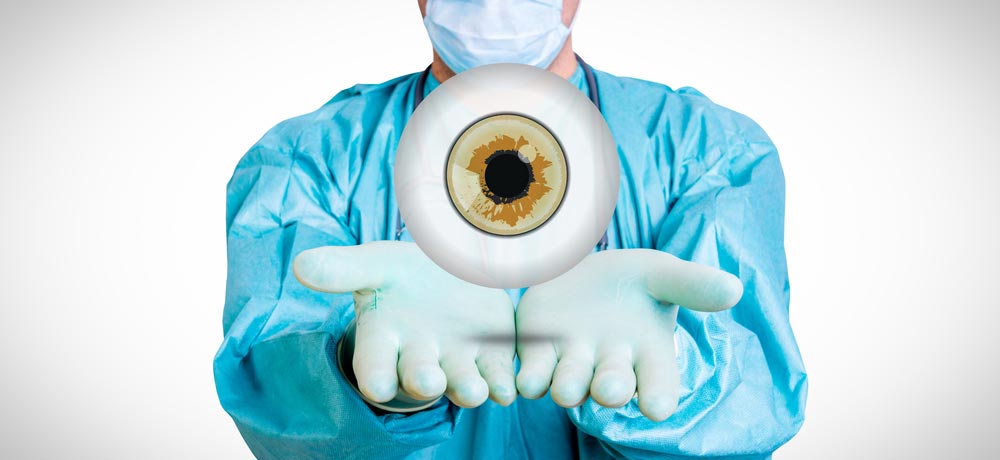Whatever You Need to Find Out About the Most Current Developments in Glaucoma Treatment and Eyecare
In the realm of ocular health and wellness, innovations in the therapy and monitoring of glaucoma have been steadily developing, paving the method for improved individual treatment and end results. From sophisticated analysis devices that provide unmatched understandings right into the disease development to cutting-edge surgical strategies that assure higher precision and quicker recovery times, the landscape of glaucoma treatment is undergoing a substantial transformation.
Advanced Diagnostic Technologies
Advanced diagnostic modern technologies play a critical duty in the very early detection and tracking of glaucoma, permitting for extra efficient therapy and administration of the condition. Among these technologies, optical comprehensibility tomography (OCT) attracts attention as a non-invasive imaging strategy that supplies in-depth cross-sectional pictures of the retina, optic nerve head, and retinal nerve fiber layer. This high-resolution imaging helps medical professionals analyze architectural changes in the eye triggered by glaucoma, allowing them to step in quickly.
Additionally, aesthetic field screening, such as automated perimetry, is an additional necessary diagnostic device for examining glaucoma-related vision loss - glaucoma service near me. This test measures the level of sensitivity of a client's aesthetic field, helping to identify any type of locations of vision loss or distortion. By integrating OCT imaging with visual area testing, medical care suppliers can obtain a thorough understanding of the illness's development and tailor therapy prepares accordingly
Minimally Intrusive Surgery
In the world of glaucoma management, the emphasis shifts in the direction of minimally invasive surgeries as a positive strategy to deal with the development of the condition adhering to advanced analysis assessments such as optical coherence tomography (OCT) and aesthetic area screening. Minimally invasive glaucoma surgical procedures (MIGS) have obtained popularity because of their performance in decreasing intraocular stress while reducing the threats and recovery times connected with typical glaucoma surgeries. These treatments are generally done via little lacerations, frequently combined with cataract surgery, making them less intrusive and extra comfortable for individuals.
Some usual MIGS treatments include trabecular micro-bypass stents, which improve the outflow of aqueous wit, and micro-sized implants that boost water drainage in the eye. Additionally, laser treatments such as discerning laser trabeculoplasty (SLT) offer a non-invasive choice for reducing intraocular stress. By including these minimally invasive methods right into glaucoma monitoring, eye doctors can give clients with efficient treatment alternatives that focus on safety and security and fast recuperation, inevitably boosting lasting end results for people with glaucoma.
Novel Medication Therapies
Emerging drug treatments present promising methods for improving the pharmacological monitoring of glaucoma, using ingenious approaches to resolve intraocular pressure control and condition development. One novel medicine therapy that has actually gathered attention is Rho kinase preventions.

Telemedicine and Remote Surveillance
With the development of novel medication treatments broadening the therapy landscape for glaucoma, the combination of telemedicine and remote surveillance becomes a crucial element in boosting client treatment and disease monitoring. Telemedicine allows eye treatment professionals to remotely analyze clients, give assessments, and display disease progression without the demand for in-person gos to. This is especially beneficial for glaucoma clients that require frequent tracking to avoid vision loss. Remote tracking modern technologies make it possible for clients to determine their intraocular pressure or visual area in the house, enabling timely modifications to therapy strategies. By making use of telemedicine and remote monitoring, health care carriers can enhance access to care, enhance individual conformity, and spot potential problems early, causing far better end results for people with glaucoma. Additionally, these technologies provide benefit for individuals, particularly those in remote locations or with wheelchair constraints, by lowering the demand for constant facility visits. Welcoming telemedicine and remote surveillance in glaucoma monitoring stands for a substantial innovation in optimizing person care and therapy efficacy.
Personalized Treatment Strategies
Advancing past traditional one-size-fits-all techniques, personalized therapy strategies tailored to specific patient features are transforming the monitoring of glaucoma. By customizing treatment strategies based on elements such as age, condition severity, way of life, and various other health conditions, eye doctors can optimize outcomes and enhance individual contentment.
Personalized treatment techniques in glaucoma entail a comprehensive evaluation of each individual's one-of-a-kind account. This may include genetic testing to recognize details risk elements, imaging methods to analyze architectural adjustments in the eye, and functional tests to examine aesthetic area loss. By incorporating these customized understandings, doctor can develop targeted interventions that address the underlying reasons for glaucoma official site progression for each individual.
Furthermore, developments in innovation have actually allowed the advancement of individualized treatment choices such go right here as minimally invasive glaucoma surgeries (MIGS) tailored to the patient's details demands - retina service near me. These procedures supply reliable intraocular stress control with fewer problems, enhancing the overall quality of take care of glaucoma people. Welcoming individualized treatment methods marks a substantial standard change in glaucoma administration, emphasizing accuracy medication to deliver customized remedies for much better client end results
Verdict
In verdict, the current developments in glaucoma therapy and eyecare include advanced analysis technologies, minimally intrusive surgeries, unique drug treatments, telemedicine and remote monitoring, and tailored treatment approaches. These improvements are transforming the means we deal with and diagnose glaucoma, using more reliable and customized alternatives for individuals. By remaining up-to-date with these growths, healthcare professionals can offer far better care and enhance outcomes for individuals with glaucoma.

With the evolution of unique drug therapies increasing the treatment landscape for glaucoma, the assimilation of telemedicine and remote surveillance arises as an essential part in boosting client treatment and illness monitoring. refractive surgeries in al. Welcoming telemedicine and remote tracking in glaucoma management represents a substantial improvement in optimizing patient treatment and treatment effectiveness
In verdict, the latest advancements in glaucoma therapy and eyecare include advanced diagnostic innovations, minimally intrusive medical procedures, novel medication treatments, telemedicine and remote surveillance, and personalized treatment methods.